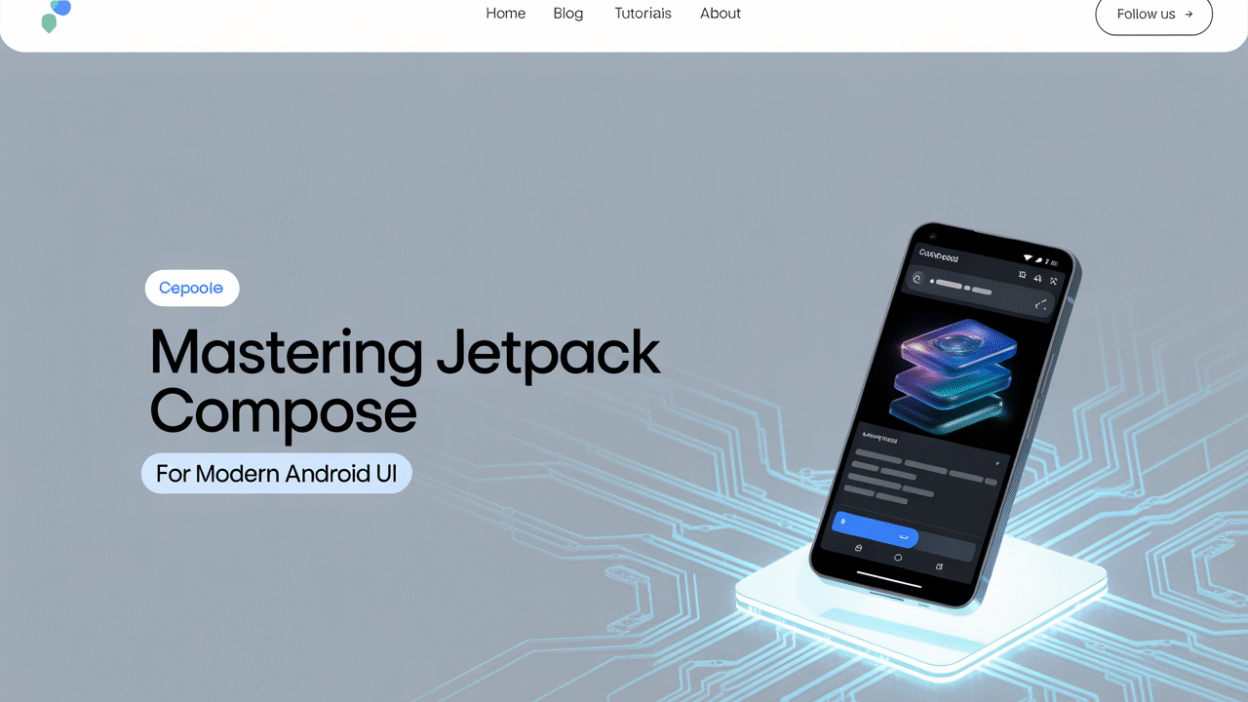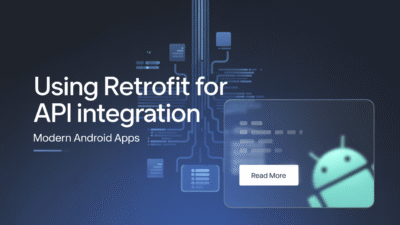In the ever-evolving landscape of Android development, Jetpack Compose has emerged as a powerful toolkit for building modern, dynamic user interfaces. As Google’s declarative UI framework, Jetpack Compose simplifies and accelerates UI development on Android, replacing the traditional XML-based approach with a more intuitive and flexible method.
Whether you’re an experienced Android developer or just starting out, mastering Jetpack Compose can significantly enhance your ability to create beautiful, responsive, and maintainable apps.
What is Jetpack Compose?
Jetpack Compose is a modern UI toolkit introduced by Google in 2019 and officially released in 2021. It allows developers to build native Android UIs using Kotlin, leveraging a declarative programming model. Instead of defining UI components in XML files and manipulating them through imperative code, developers describe what the UI should look like in a composable function that automatically updates when the app’s state changes.
Key features of Jetpack Compose include:
- Declarative Syntax: Define what the UI should look like without needing to manage every change manually.
- Built-in Support for State Management: Simplifies handling dynamic content and interactions.
- Interoperability with Existing Views: Allows gradual adoption alongside legacy XML-based UIs.
- Live Preview: Offers real-time preview of UI components within Android Studio.
Why Learn Jetpack Compose?
As Android development continues to shift toward modern practices, Jetpack Compose offers several compelling advantages:
1. Simplified UI Development
Compose eliminates the need for multiple files (XML layouts, ViewHolders, adapters) and boilerplate code, allowing developers to write less code and reduce complexity.
2. Faster Development Cycles
With live previews and hot-reload functionality, developers can see changes instantly, speeding up the design and testing process.
3. Better Maintainability
The declarative nature of Jetpack Compose makes it easier to understand and modify UI logic, improving long-term project sustainability.
4. Future-Proofing Your Skills
Google has made it clear that Jetpack Compose is the future of Android UI development. Investing time in learning Compose ensures developers remain relevant and competitive.
Getting Started with Jetpack Compose
To begin working with Jetpack Compose, ensure your development environment meets the following requirements:
- Android Studio Arctic Fox or later
- Kotlin plugin version 1.5.21 or higher
- Target SDK version 21 or higher
Once your setup is ready, you can start creating composable functions using the @Composable annotation. Here’s a simple example:
@Composable
fun Greeting(name: String) {
Text(text = "Hello $name!")
}This function defines a basic UI element—a text label—that can be reused across different parts of your application.
Core Concepts in Jetpack Compose
Understanding these foundational concepts will help you master Jetpack Compose:
Composable Functions
These are the building blocks of your UI. They take input data and produce UI elements based on that data.
State and Recomposition
Jetpack Compose automatically re-renders UI components when their underlying state changes. Managing state effectively is crucial for creating responsive apps.
Layout System
Compose uses a flexible layout system based on three core components:
- Column: Arranges items vertically
- Row: Arranges items horizontally
- Box: Overlays items on top of each other
Modifiers
Used to customize the appearance and behavior of UI elements, such as padding, background color, click events, and size constraints.
Best Practices for Mastering Jetpack Compose
Here are some tips to accelerate your learning and proficiency:
1. Start Small
Begin with simple UI components before tackling complex screens. This helps reinforce fundamental concepts without overwhelming yourself.
2. Use Android Studio Previews
Take full advantage of the built-in preview feature to test and iterate quickly on your designs.
3. Follow Official Documentation and Sample Projects
Google provides comprehensive guides, codelabs, and sample projects that are invaluable for learning best practices.
4. Explore Open Source Libraries
Libraries like Accompanist and Decompose offer additional tools and utilities that extend Jetpack Compose’s capabilities.
5. Join Developer Communities
Engaging with communities on platforms like Reddit, Stack Overflow, GitHub, and Dev.to can provide support, inspiration, and insights from fellow developers.
Conclusion
Mastering Jetpack Compose is not just about learning a new framework—it’s about embracing a new way of thinking about Android UI development. With its declarative approach, powerful tooling, and growing ecosystem, Jetpack Compose empowers developers to build high-quality, modern applications more efficiently than ever before.
As the Android ecosystem continues to evolve, proficiency in Jetpack Compose will become increasingly valuable. Whether you’re looking to improve your current projects or future-proof your skills, investing time in learning this innovative framework is a decision that will pay dividends in the years to come.


